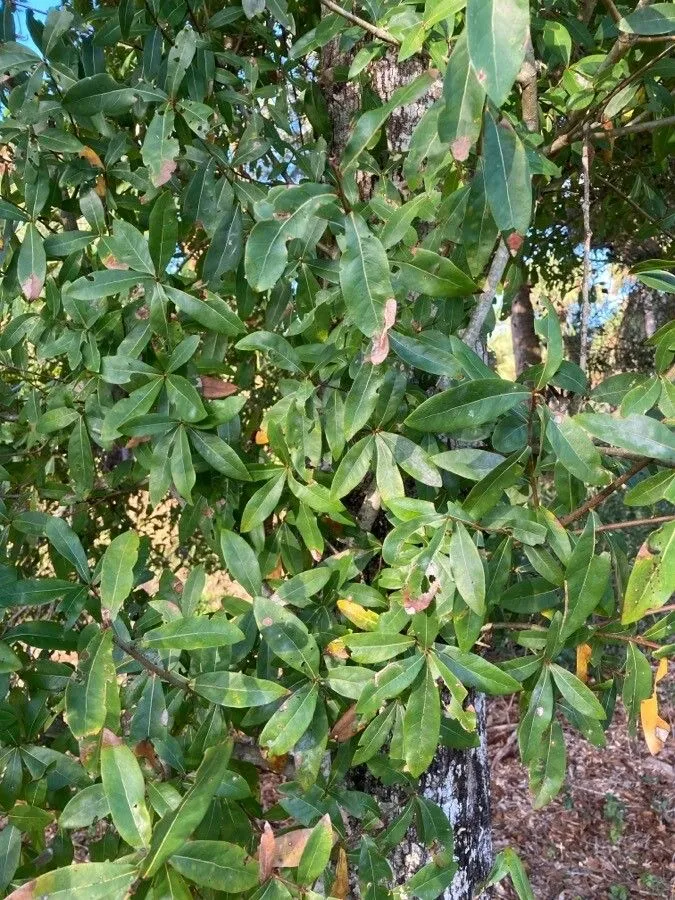
Author: Michx.
Bibliography: Hist. Chênes Amér.: 17 (1801)
Year: 1801
Status: accepted
Rank: species
Genus: Quercus
Vegetable: Unknown
Observations: SE. U.S.A. to Texas
The Laurel oak, scientifically known as Quercus laurifolia, is an esteemed member of the Fagaceae family. This deciduous tree is predominantly found in the southeastern regions of the United States, extending as far west as Texas. The species was first described by the renowned botanist Michx. in his 1801 publication, “Hist. Chênes Amér.”
Quercus laurifolia exhibits a distinctive appearance with its glossy, laurel-like leaves that provide it with its common name. The leaves are typically dark green, smooth, and can vary in shape from oval to lanceolate, often retaining their vibrant color well into the autumn months before they eventually shed.
Thriving in well-drained soils, the Laurel oak is adaptable to a variety of habitats, often found in mixed hardwood forests, along riverbanks, and in sandy upland regions. Its resilience and adaptability make it a common sight in the southern landscapes where it contributes significantly to the local ecosystem.
The tree’s acorns serve as a vital food source for various wildlife, including birds and mammals. The wood of the Laurel oak, known for its strength and durability, is often utilized in construction and manufacturing, though it is not as highly valued as some other oaks due to its relatively rapid rate of decay when exposed to the elements.
Overall, the Laurel oak is appreciated not only for its ecological contributions but also for its aesthetic appeal. Its presence in the southeastern United States makes it an integral part of the region’s natural heritage.
Eng: laurel oak, swamp laurel oak
En: Laurel oak, Swamp laurel oak
Taken Jun 10, 2020 by Jon Webb (cc-by-sa)
Taken Sep 11, 2022 by Seth Morris (cc-by-sa)
Taken Aug 12, 2020 by Diego Alex (cc-by-sa)
Taken Jul 20, 2022 by michael kopas (cc-by-sa)
Taken Dec 16, 2021 by Collados Ana (cc-by-sa)
Taken Mar 29, 2022 by Maarten Vanhove (cc-by-sa)
Taken Aug 20, 2022 by Pedro Gaspar (cc-by-sa)
Taken Apr 24, 2022 by k sullivan (cc-by-sa)
Taken Sep 11, 2022 by Seth Morris (cc-by-sa)
Taken Jun 10, 2020 by Jon Webb (cc-by-sa)
© copyright of the Board of Trustees of the Royal Botanic Gardens, Kew.
© copyright of the Board of Trustees of the Royal Botanic Gardens, Kew.
© copyright of the Board of Trustees of the Royal Botanic Gardens, Kew.
Taken Mar 2, 2022 by Philippe de Spoelberch (cc-by-sa)
Taken Dec 16, 2021 by Collados Ana (cc-by-sa)
Family: Myrtaceae Author: (F.Muell.) K.D.Hill & L.A.S.Johnson Bibliography: Telopea 6: 402 (1995) Year: 1995 Status:…
Family: Rubiaceae Author: Pierre ex A.Froehner Bibliography: Notizbl. Bot. Gart. Berlin-Dahlem 1: 237 (1897) Year:…
Family: Sapindaceae Author: Koidz. Bibliography: J. Coll. Sci. Imp. Univ. Tokyo 32(1): 38 (1911) Year:…
Family: Asteraceae Author: A.Gray Bibliography: Pacif. Railr. Rep.: 107 (1857) Year: 1857 Status: accepted Rank:…
Family: Fabaceae Author: Medik. Bibliography: Vorles. Churpfälz. Phys.-Ökon. Ges. 2: 398 (1787) Year: 1787 Status:…
Family: Aspleniaceae Author: (Cav.) Alston Bibliography: Bull. Misc. Inform. Kew 1932: 309 (1932) Year: 1932…